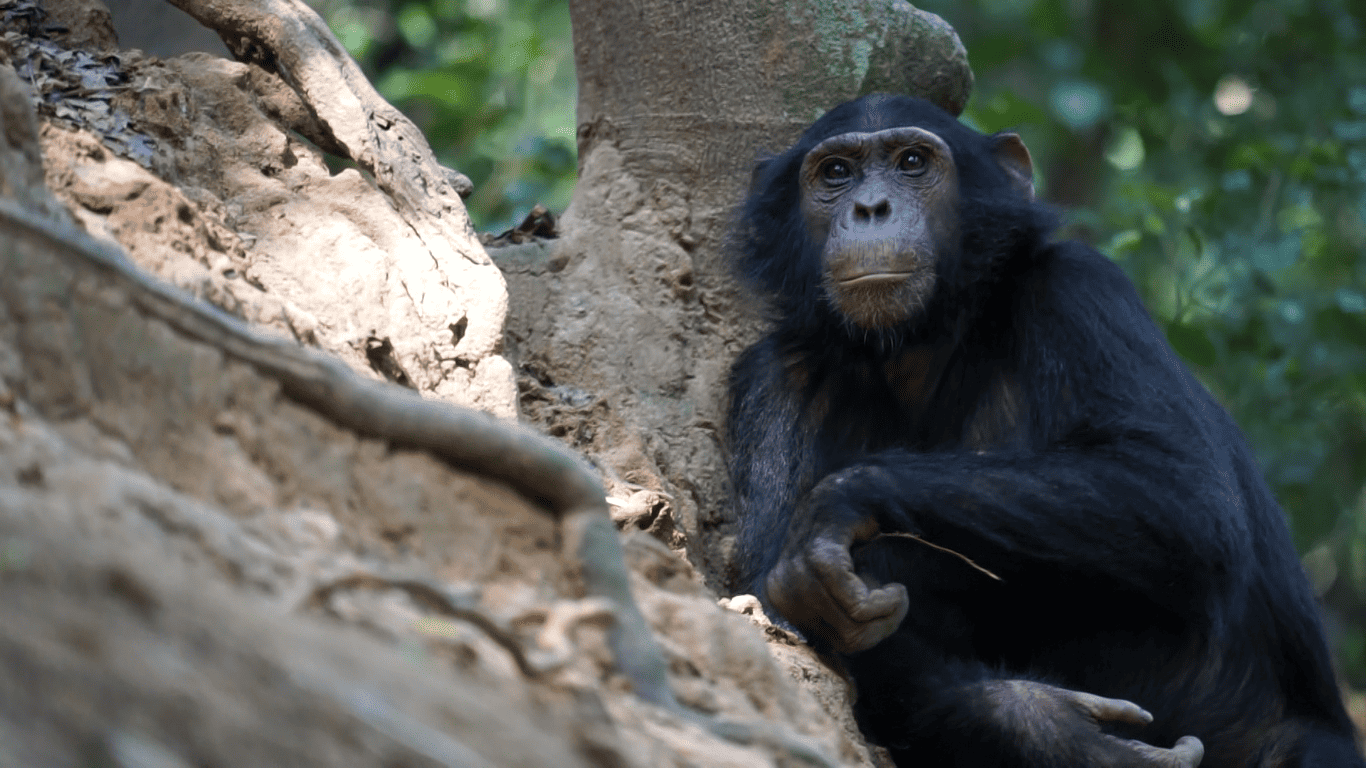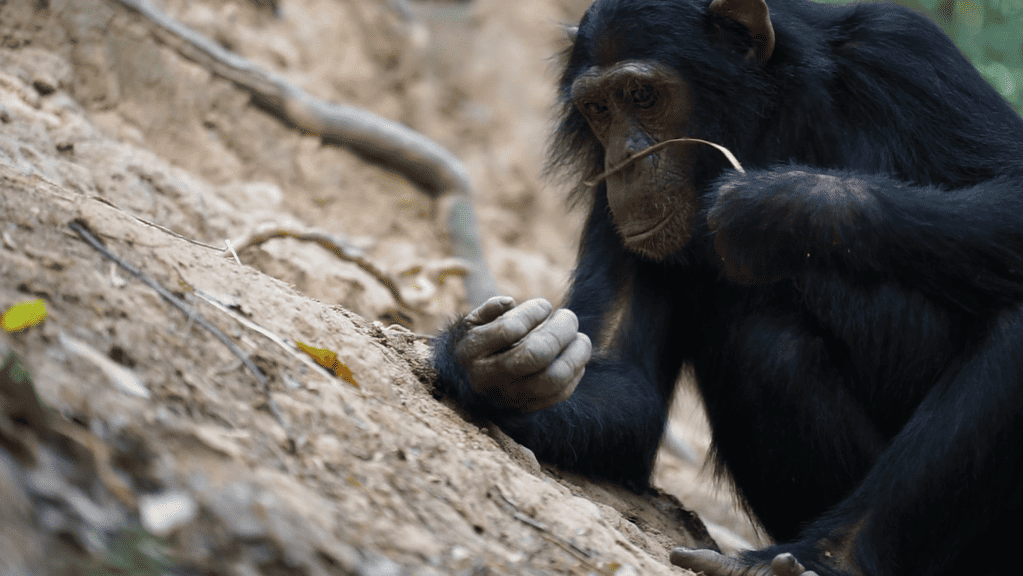In 1960, Jane Goodall saw chimpanzees (Pan troglodytes) in Tanzania build tools out of vegetation to use them to “fish” for termites. It was the first evidence of non-human animals making and using tools in the wild. While much has been studied since then, we still don’t know if chimps are fishing for a seasonal treat or trying their luck.

Now, researchers at University College London (UCL) and the University of California Santa Cruz (UCSC) decided to look at this further. They investigated the link between termite availability and chimp fishing and found termites are mostly available early in the wet season. Despite the availability of other foods during this time, chimps choose to termite fish.
“Though we can never read a chimpanzee’s thoughts, we can perhaps start to get an idea of their expectations of resource availability by analyzing the instances in which they arrive at termite mounds and investigate them for fishing viability,” Vicky Oelse, senior author of the study and researcher at UCSC, said in a news release.
Delicious treats
Chimpanzees rely on termites as a key nutritional source, but their preferred termite species (the genus Macrotermes) lives deep within sturdy mounds resembling fortresses. But, from time to time, some termites will leave to establish new colonies, creating flight holes in the mounds. Chimpanzees take advantage of these holes for termite fishing.
In some places, chimpanzees go termite fishing all year. In others, fishing is seasonal. Studying the availability of termites is crucial for understanding the diversity in chimpanzee use of fishing tools. In their study, the researchers focused on termites living in the region of Issa Valley in Tanzania, which has very distinct wet and dry seasons.
They compiled extensive meteorological data and utilized camera trap footage from 13 mounds to chart termites’ dispersal patterns and chimpanzee predation activity over an extended period. Additionally, termite-fishing trials were conducted at 14 mounds in Issa Valley between 2018 and 2022, replicating the tools and techniques used by chimps.
“When I first visited the Issa Valley, I quickly learned that it was more difficult to termite fish than I had expected,” Seth Phillips, corresponding author of the study, said in a news release “It alerted me to the idea that effective foraging for these termite prey might be more complicated than people commonly understand it.”
Termites on the menu
Of 1,924 termite-fishing attempts, only 363 were successful. The researchers found they were more likely to extract termites as rainfall increased — until 200 millimetres of rain had fallen. Beyond this, the proportion of successful trials declined. The majority of termite mounds were most active between 50 and 200 mm of cumulative rainfall.

Notably, dispersal flights occurred exclusively during the wet season and nearly ceased entirely after reaching 400 mm of rainfall. Chimpanzees were among the most frequently recorded predators at the termite mounds and often arrived with a tool.
“We are currently reviewing camera trap footage of the chimpanzee behaviors at these mounds,” said Phillips. “We want to know how chimps adapt their searching behavior according to seasonal changes. For instance, do they investigate termite mounds directly after rainfall after a long dry spell? This data could say something interesting.”
Gone fishing
While some chimpanzee communities, such as those at the Gombe Stream National Park (140km away from Issa Valley), exploit termites throughout the year, termite fishing there also peaks during the early wet season. Those fishing year-round may be benefiting from softer soil or more effective tools, which the researchers argue wouldn’t work at Issa Valley.
“The seasonality of termite-fishing in the Issa Valley is likely driven in large part by the seasonal reproductive ecology of Macrotermes, which is in turn driven by meteorological factors, in particular cumulative rainfall,” the study reads. The team suggests a “dynamic interplay” between rainfall, termite reproduction, chimp’s tool use and predation events.









